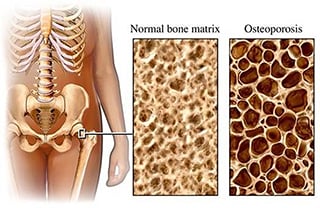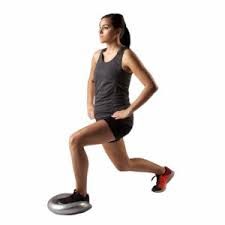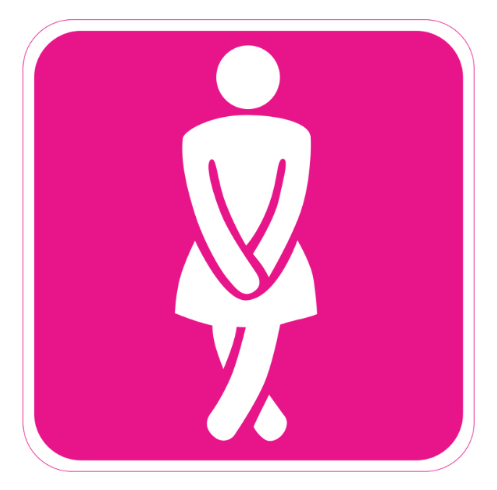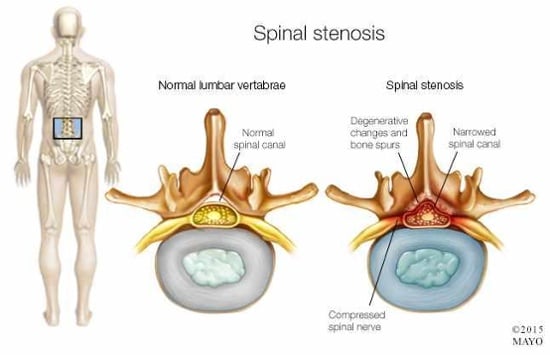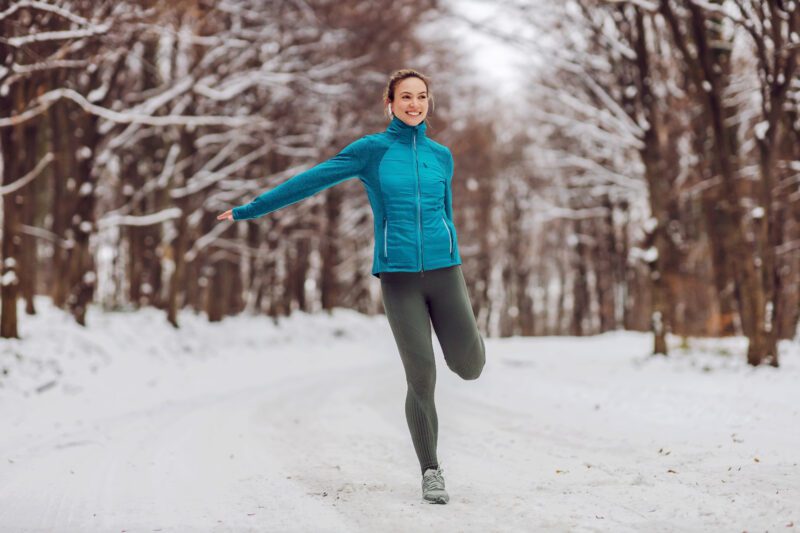
Colder weather means some changes to how we exercise. Of course, it’s harder to motivate yourself to get outside for a run or bike ride when the temperature drops, and the shorter days compress our schedules, but there are changes in your body that affect your ability to exercise too. For many people with arthritis or other joint problems, cold weather brings more complaints of pain.
To stay warm, our bodies narrow blood vessels to reduce blood flow to the skin, and more superficial muscles. That means that there is an increased risk of muscle strains in the cold. There is also an increased strain on the heart because of the narrowed blood vessels.
This isn’t to say that you shouldn’t be active outdoors in the cold, it just means you may have to make a few changes to your routine. Here are a few to consider:
Warm up the right way, even in the cold
A good warm-up is always important, but because of the tendency for joints to be stiffer, and blood flow to muscles to be reduced in the cold, it’s even more important that you do it right this time of year. To start, do something to get your heart rate up a bit, maybe a brisk walk or light jog. Next, follow that up with a dynamic warm-up rather than static stretches. This could include walking or jogging while pulling your knees up high to your chest. Maybe some high kicks in front of you with straight knees to get your hamstrings loosened. A walking lunge with an upper-body twist can get your whole body moving. Cater your warm-up to what you have planned in your workout. If you’re not sure how it should look, ask your physical therapist!
Dress accordingly – layer up!
Dressing in layers allows you to adjust your insulation to your activity level. After you warm-up, you might want to take off a layer to avoid getting too hot during your main activity. You’ll have it there later to put back on when your activity level drops and you start getting too cold.
Don’t forget about the sun either – just because it’s cold doesn’t mean the UV rays are gone. Sunscreen and sunglasses aren’t just for the summer. A lip balm with SPF can protect you not only from the sun but from the wind too.
Hydration is just as important in the cold weather
Drink water before, during, and after your workout. The temperature may be down, but you’ll still sweat and you’ll still lose water vapor in your breath. The drier air in winter lets your sweat evaporate more quickly, so it’s easy to underestimate how much fluid you’ve lost. What does this mean? Hydration is just as important in cold weather as it is in the hot summer months.
Cool Down
When you’re done, don’t rush to get inside and crawl under a blanket. Cool down properly. Keep moving with a walk or another form of active recovery to let your heart rate come down. After exercise is the right place for static stretching. You can also head inside for some foam rolling or self-massage.
The days being shorter and the temperatures being lower don’t mean you’re stuck inside for all of your exercise. If you follow these tips, you can safely keep moving outside. If you’d like a customized warm-up or cool down, or have questions about your exercise routine, your physical therapist is a great person to ask!
*Thank you to the APTA Private Practice Section for providing the content for this blog.
Keep Reading…
What is Tennis Elbow?
What is Tennis Elbow? Tennis Elbow, or Lateral Epicondylitis, [...]
What is Osteoporosis?
What is Osteoporosis? Osteoporosis is a condition that causes [...]
The Truth about The Core and Balance
Most people equate having good strength to "six pack abs." The truth is that while it might look good, the six pack is not the same as having a strong core.
4 Quick Tips for Avoiding Hand Injuries
We live in a technology driven word, giving our hands, wrists and fingers more of a workout than we realize. A physical therapist can help prevent these types of overuse injuries.
Incontinence – Not the New Normal
With female incontinence being brought to the forefront by companies whose sole purpose is to make money on their products - it’s no surprise we’re being fed a lie about it being a “normal” transition of life.
Spinal Stenosis and Lower Back Pain
Spinal Stenosis is one of the most common conditions that causes lower back pain and lower extremity (leg) pain in older adults.


